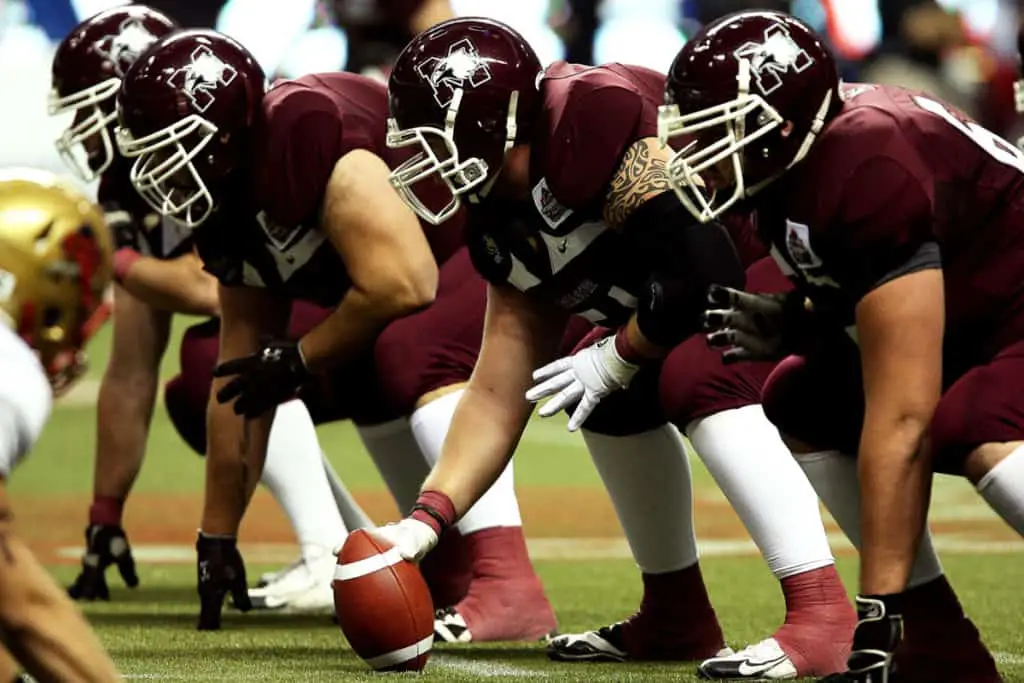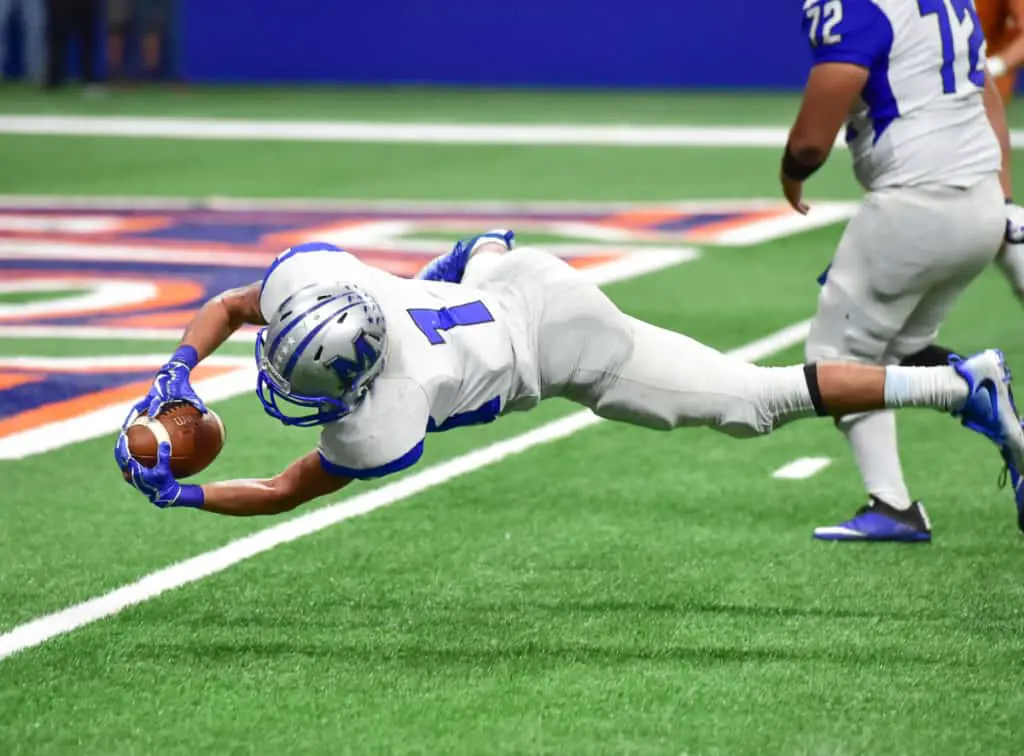If you have watched football at any level recently, you may have noticed more players wearing visors.
While not required, many players have turned to the visors for numerous benefits including safety.
Keeping players safe and on the field is major priority for many players, parents and coaches.
Why do football players wear visors?
A visor is attached to a helmet and is worn by players to add protection to their eyes. Football is a rough game and the occasional finger poke may occur between the facemask when a visor is not worn. It also provides a potential competitive advantage when the visors is tinted dark the opposition can not see where a player is potentially looking.
Benefits of a visor in football
- Protection for the eyes
- Competitive advantage

Benefit #1: Protection for the eyes
The eyes are obviously an important part to any player’s ability to play the game. A main goal for many of the players is safety and the visor adds an additional piece of equipment that a player can wear to provide safety. Specifically the visor provides protection from the eyes from a hands to face scenario where the hands or fingers go through the face mask and can impact the eyes.
While hands to the face is against the rule within the line of scrimmage, you will see the occasional running back, wide receiver or quarterback use a stiff arm to the face to try to keep the defensive player from making the tackle.
As a result, many offensive and defensive players chose to wear a mask for the extra safety that is provided. It also can provide a competitive advantage, not only from being able to stay injury free and being available to your team, but also can serve as a play by play advantage as well.
In just about every football game, there is a situation where offensive and defensive linemen get flagged for an illegal hands to the face. The play in the trenches is fierce and tempers flare as the emotion of playing football spills out at times.
Why do football players wear fanny packs?
Benefit #2: Competitive advantage
As the quarterback, running back or wide receiver come to the line of scrimmage, they are often reading the defensive scheme and formation that the defensive back is currently in.
The offensive players know the play call and are reading what might work against the specific defense. If a running back is running a certain direction, the defensive player might try to read their eyes prior to the ball being snapped. The visors work to prevent the defense from being able to see where the player is looking if they only move their eyes.
The last thing the offensive players want to do is give away any signals of what the offensive play is going to be or what direction it might be headed. The visor, when tinted, can keep the defensive player from reading the eyes of the offensive player.
Why do football players have towels?
Why don’t all players wear a visor in football?
Some players prefer to now have an extra layer of material potentially impacting their vision. The glare that can occur or in rainy conditions, the vision might not be 100% the same as if you were not wearing a mask.
The players has to work to keep the visor clean and free of any fog or smears throughout the game to keep the vision as clear as possible.
Others might not like the tinted mask as well. Overall, all players have their preferences and the focus on a game is just as important as the physical part in many aspects.
Why do football players wear gloves?

Should I wear a visor when playing football?
It depends, players should test them out and determine the safety levels provided and the performance with wearing a visor and if it is impacted. There is a personal preference for each individual player and the players should take the appropriate steps to test out in a practice setting.
What position should I play in football?
Next Steps: Test out the visor
The next step is to invest in a visor and test it out on the practice field. If you are a wide receiver make sure your depth perception is not impacted and that you feel comfortable catching the ball at different distances. You will want to test out short, intermediate and long throws.
If you are a quarterback, make sure you test out different length throws to ensure your vision and depth perception is 100% accurate and that you trust what you are seeing. The last thing you need is a lack of confidence or to start questioning what you are seeing at the line of scrimmage or in the middle of the play.
Final Thoughts
Safety is the first priority when playing football. Not only do you want short term health, but long term health is vital as well. You need to stay on the field for the season, while ensuring you do not sustain a long term injury that will impact the quality of life. Make sure you test out your different safety features and make the best decision with as much information you can gather.
